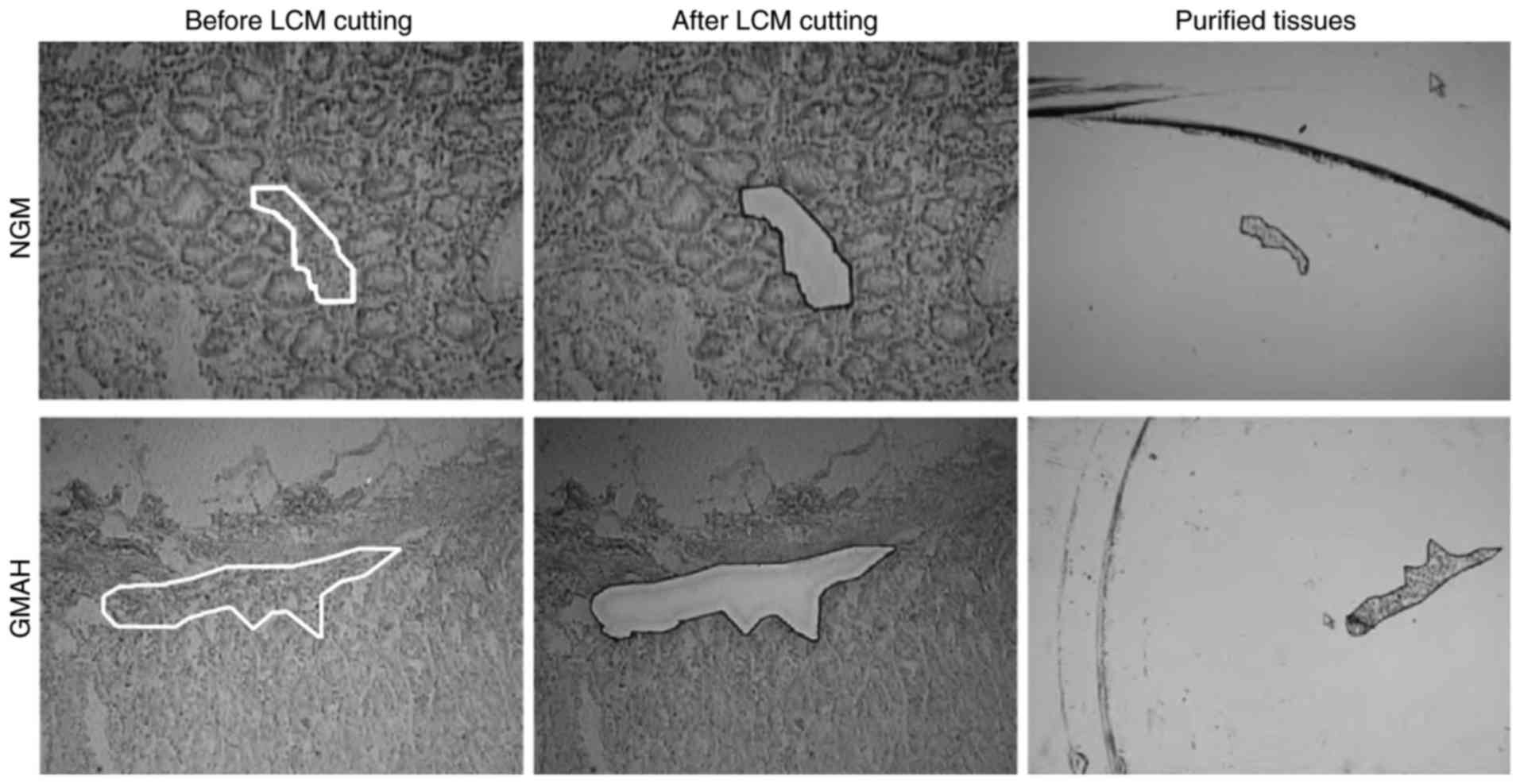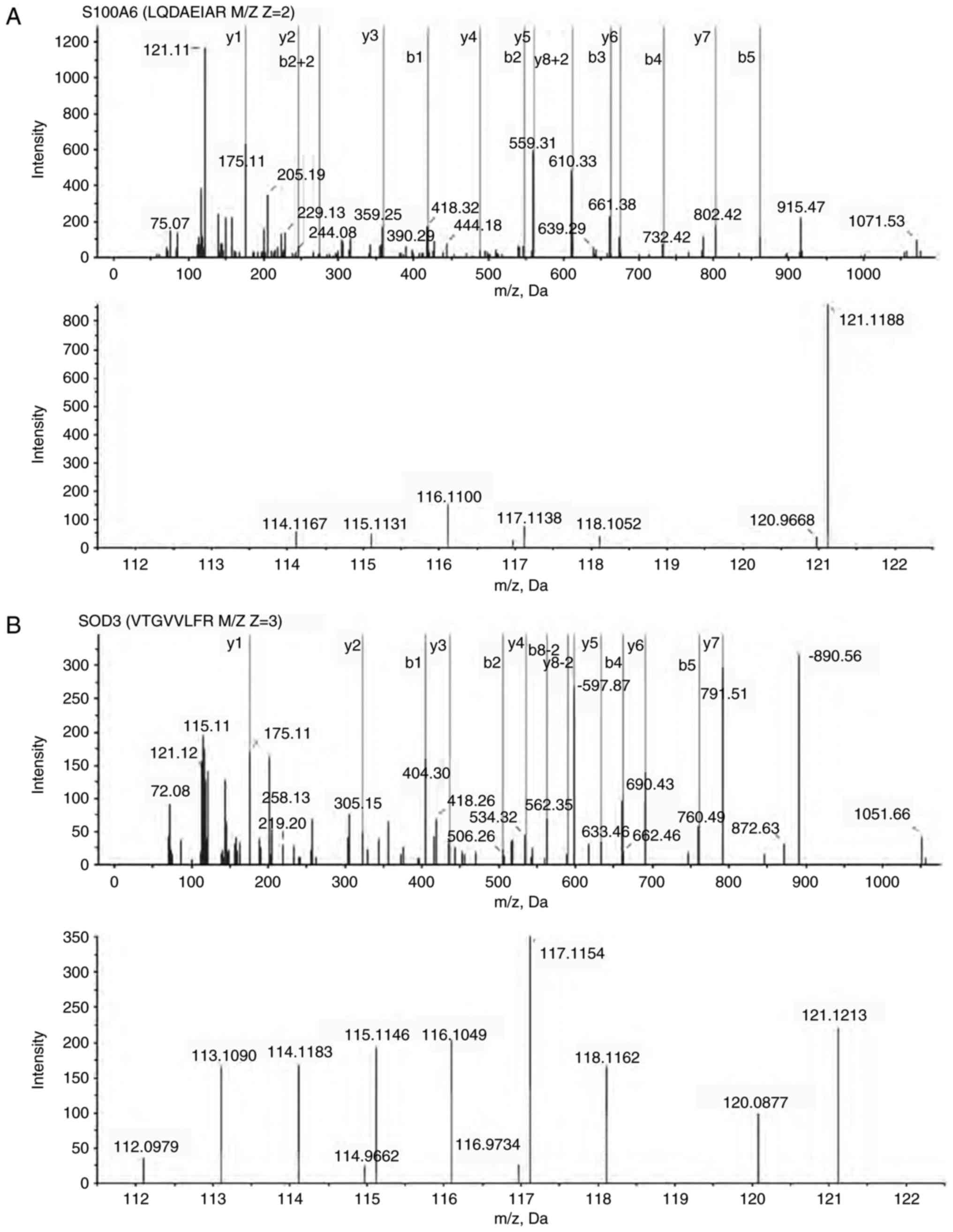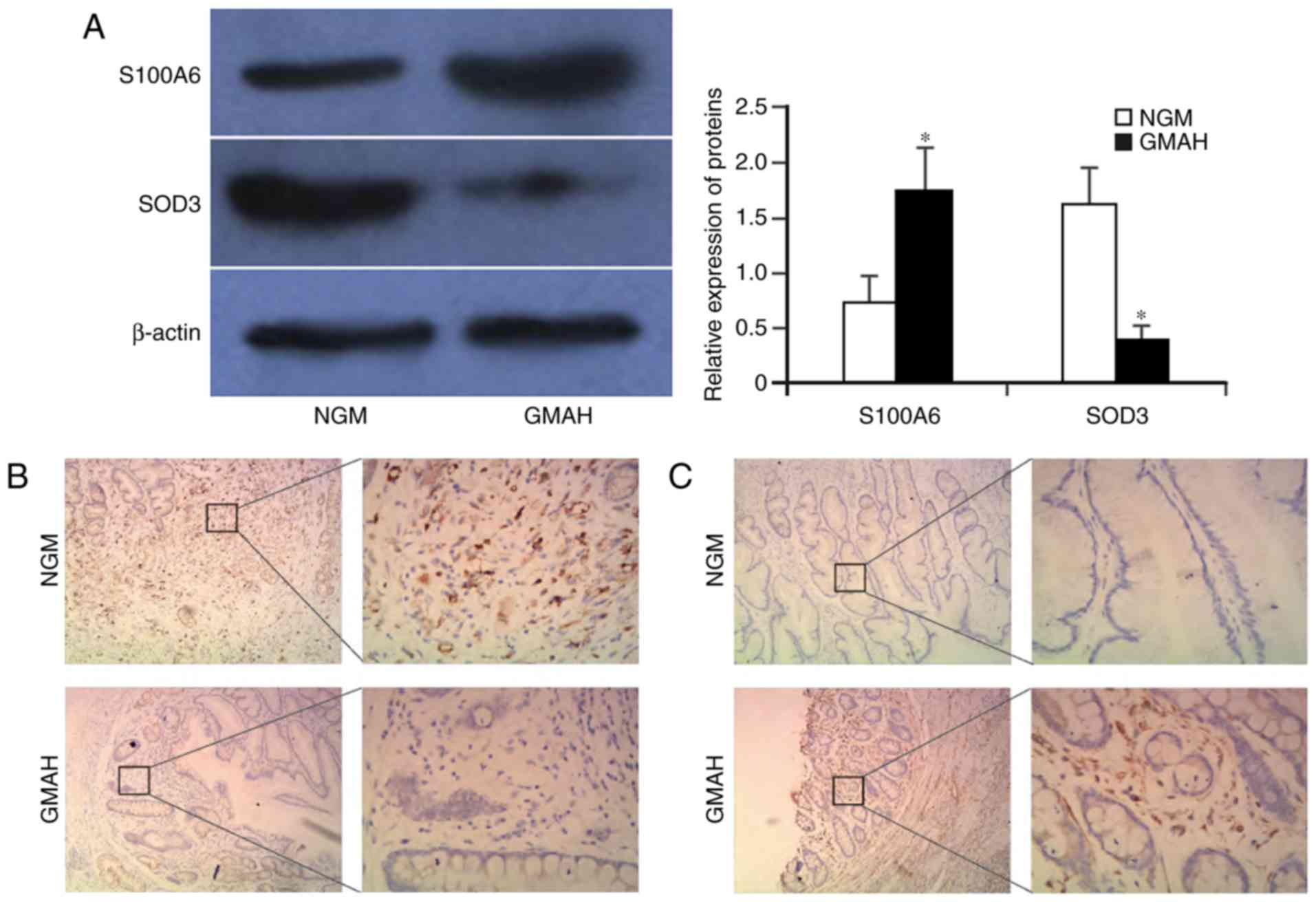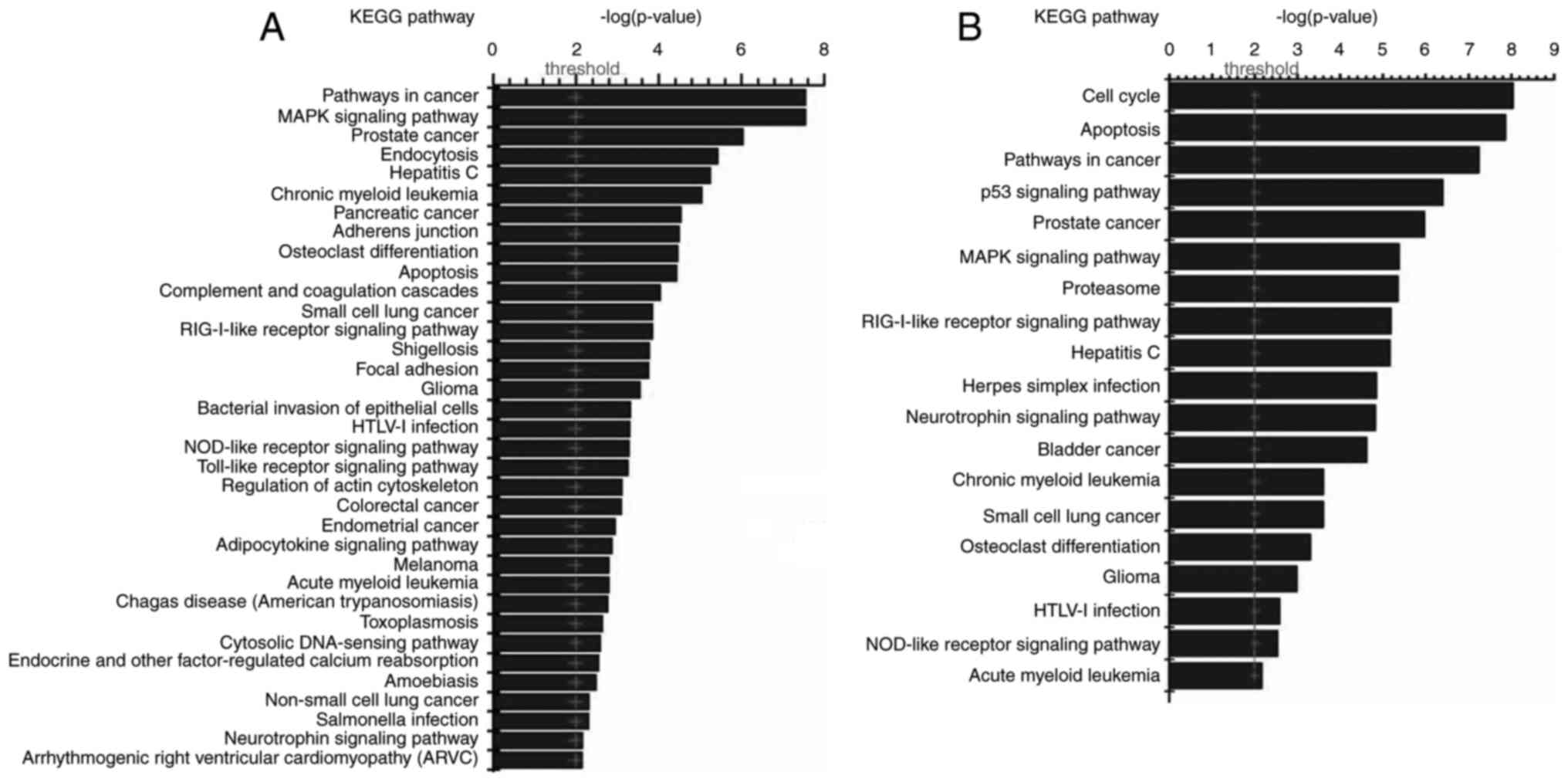|
1
|
Chen W, Zheng R, Baade PD, Zhang S, Zeng
H, Bray F, Jemal A, Yu XQ and He J: Cancer statistics in China,
2015. CA Cancer J Clin. 66:115–132. 2016. View Article : Google Scholar : PubMed/NCBI
|
|
2
|
Lim B, Kim JH, Kim M and Kim SY: Genomic
and epigenomic heterogeneity in molecular subtypes of gastric
cancer. World J Gastroenterol. 22:1190–1201. 2016. View Article : Google Scholar : PubMed/NCBI
|
|
3
|
Correa P: Human gastric carcinogenesis: A
multistep and multifactorial process-First American Cancer Society
Award lecture on cancer epidemiology and prevention. Cancer Res.
52:6735–6740. 1992.PubMed/NCBI
|
|
4
|
Kohlhapp FJ, Mitra AK, Lengyel E and Peter
ME: MicroRNAs as mediators and communicators between cancer cells
and the tumor microenvironment. Oncogene. 34:5857–5868. 2015.
View Article : Google Scholar : PubMed/NCBI
|
|
5
|
Rodvold JJ and Zanetti M: Tumor
microenvironment on the move and the Aselli connection. Sci Signal.
9:fs132016. View Article : Google Scholar : PubMed/NCBI
|
|
6
|
Langley RR and Fidler IJ: The seed and
soil hypothesis revisited-the role of tumor-stroma interactions in
metastasis to different organs. Int J Cancer. 128:2527–2535. 2011.
View Article : Google Scholar : PubMed/NCBI
|
|
7
|
Chin AR and Wang SE: Cancer tills the
premetastatic field: Mechanistic basis and clinical implications.
Clin Cancer Res. 22:3725–3733. 2016. View Article : Google Scholar : PubMed/NCBI
|
|
8
|
Amin MB, Edge SB, Greene FL, Byrd DR,
Brookland RK, Washington MK, Gershenwald JE, Compton CC, Hess KR,
Sullivan DC, et al: AJCC cancer staging manual. 8th ed. New York:
Springer; pp. 203–220. 2016
|
|
9
|
Wang XH, Du H, Li L, Shao DF, Zhong XY, Hu
Y, Liu YQ, Xing XF, Cheng XJ, Guo T, et al: Increased expression of
S100A6 promotes cell proliferation in gastric cancer cells. Oncol
Lett. 13:222–230. 2017. View Article : Google Scholar : PubMed/NCBI
|
|
10
|
Kim J, Mizokami A, Shin M, Izumi K, Konaka
H, Kadono Y, Kitagawa Y, Keller ET, Zhang J and Namiki M: SOD3 acts
as a tumor suppressor in PC-3 prostate cancer cells via hydrogen
peroxide accumulation. Anticancer Res. 34:2821–2831.
2014.PubMed/NCBI
|
|
11
|
Yan M and Jurasz P: The role of platelets
in the tumor microenvironment: From solid tumors to leukemia.
Biochim Biophys Acta. 1863:392–400. 2016. View Article : Google Scholar : PubMed/NCBI
|
|
12
|
Justus CR, Sanderlin EJ and Yang LV:
Molecular connections between cancer cell metabolism and the tumor
microenvironment. Int J Mol Sci. 16:11055–11086. 2015. View Article : Google Scholar : PubMed/NCBI
|
|
13
|
Linton SS, Sherwood SG, Drews KC and
Kester M: Targeting cancer cells in the tumor microenvironment:
Opportunities and challenges in combinatorial nanomedicine. Wiley
Interdiscip Rev Nanomed Nanobiotechnol. 8:208–222. 2016. View Article : Google Scholar : PubMed/NCBI
|
|
14
|
Wu AA, Drake V, Huang HS, Chiu S and Zheng
L: Reprogramming the tumor microenvironment: Tumor-induced
immunosuppressive factors paralyze T cells. Oncoimmunology.
4:e10167002015. View Article : Google Scholar : PubMed/NCBI
|
|
15
|
Schneider G and Filipek A: S100A6 binding
protein and Siah-1 interacting protein (CacyBP/SIP): Spotlight on
properties and cellular function. Amino Acids. 41:773–780. 2011.
View Article : Google Scholar : PubMed/NCBI
|
|
16
|
Leśniak W, Słomnicki ŁP and Filipek A:
S100A6-new facts and features. Biochem Biophys Res Commun.
390:1087–1092. 2009. View Article : Google Scholar : PubMed/NCBI
|
|
17
|
Kasacka I, Piotrowska Ż, Filipek A and
Majewski M: Influence of doxazosin on biosynthesis of S100A6 and
atrial natriuretic factor peptides in the heart of spontaneously
hypertensive rats. Exp Biol Med (Maywood). 241:375–381. 2016.
View Article : Google Scholar : PubMed/NCBI
|
|
18
|
Zhang J, Zhang K, Jiang X and Zhang J:
S100A6 as a potential serum prognostic biomarker and therapeutic
target in gastric cancer. Dig Dis Sci. 59:2136–2144. 2014.
View Article : Google Scholar : PubMed/NCBI
|
|
19
|
Duan L, Wu R, Zou Z, Wang H, Ye L, Li H,
Yuan S, Li X, Zha H, Sun H, et al: S100A6 stimulates proliferation
and migration of colorectal carcinoma cells through activation of
the MAPK pathways. Int J Oncol. 44:781–790. 2014. View Article : Google Scholar : PubMed/NCBI
|
|
20
|
Che M, Wang R, Li X, Wang HY and Zheng
XFS: Expanding roles of superoxide dismutases in cell regulation
and cancer. Drug Discov Today. 21:143–149. 2016. View Article : Google Scholar : PubMed/NCBI
|
|
21
|
Wang YD, Chen WD, Li C, Guo C, Li Y, Qi H,
Shen H, Kong J, Long X, Yuan F, et al: Farnesoid X receptor
antagonizes JNK signaling pathway in liver carcinogenesis by
activating SOD3. Mol Endocrinol. 29:322–331. 2015. View Article : Google Scholar : PubMed/NCBI
|
|
22
|
Xu D, Li Y, Li X, Wei LL, Pan Z, Jiang TT,
Chen ZL, Wang C, Cao WM, Zhang X, et al: Serum protein S100A9,
SOD3, and MMP9 as new diagnostic biomarkers for pulmonary
tuberculosis by iTRAQ-coupled two-dimensional LC-MS/MS. Proteomics.
15:58–67. 2015. View Article : Google Scholar : PubMed/NCBI
|
|
23
|
Griess B, Tom E, Domann F and
Teoh-Fitzgerald M: Extracellular superoxide dismutase and its role
in cancer. Free Radic Biol Med. 112:464–479. 2017. View Article : Google Scholar : PubMed/NCBI
|
|
24
|
O'Leary BR, Fath MA, Bellizzi AM, Hrabe
JE, Button AM, Allen BG, Case AJ, Altekruse S, Wagner BA, Buettner
GR, et al: Loss of SOD3 (EcSOD) expression promotes an aggressive
phenotype in human pancreatic ductal adenocarcinoma. Clin Cancer
Res. 21:1741–1751. 2015. View Article : Google Scholar : PubMed/NCBI
|













